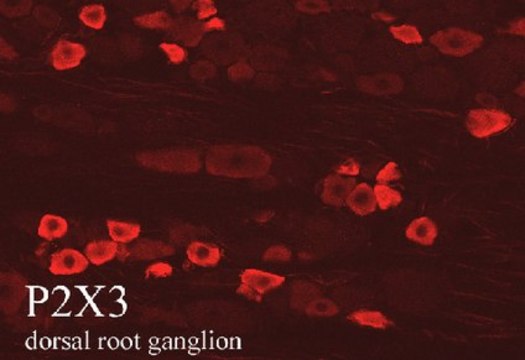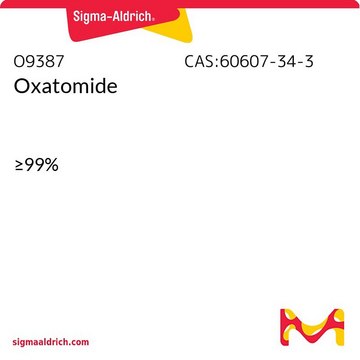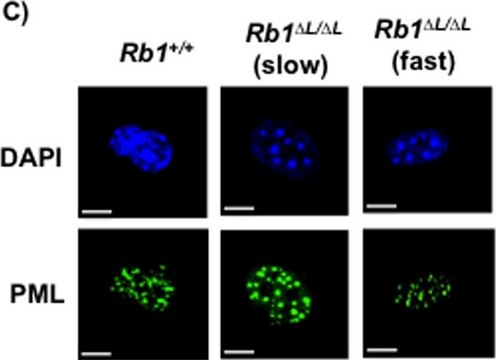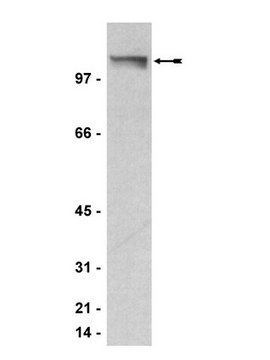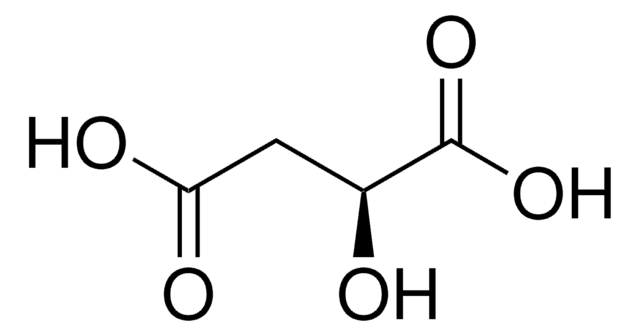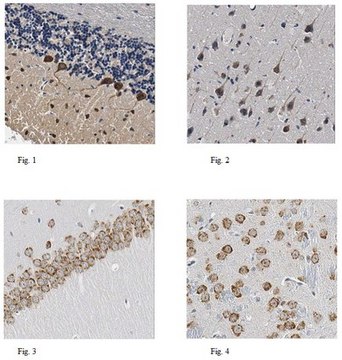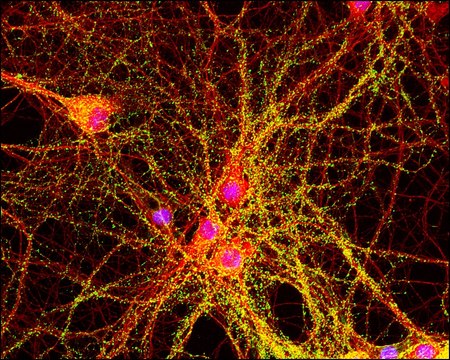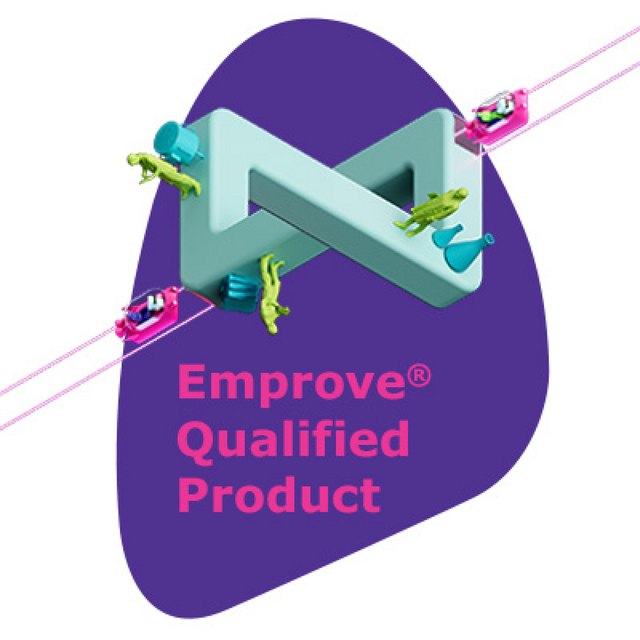P0121
Anti-Purinergic Receptor P2X3 antibody produced in rabbit
affinity isolated antibody, lyophilized powder
Sign Into View Organizational & Contract Pricing
All Photos(2)
About This Item
UNSPSC Code:
12352203
NACRES:
NA.41
Recommended Products
biological source
rabbit
Quality Level
conjugate
unconjugated
antibody form
affinity isolated antibody
antibody product type
primary antibodies
clone
polyclonal
form
lyophilized powder
species reactivity
rat
technique(s)
immunohistochemistry: suitable using rat embryo DRG
western blot: 1:200 using rat dorsal root ganglion (DRG) lysates
UniProt accession no.
shipped in
dry ice
storage temp.
−20°C
target post-translational modification
unmodified
Gene Information
rat ... P2rx3(81739)
General description
The P2X3 (purinergic receptor P2X 3) receptor is expressed in primary afferent neurons. It is a subtype of P2X receptors family of ligand-gated ion channels, activated by extracellular ATP (adenosine triphosphate).
Immunogen
peptide (C)VEKQSTDSGAYSIGH corresponding to residues 383-397 of rat P2rx3.
Application
Anti-Purinergic Receptor P2X3 antibody has been used in immunohistochemistry.
Biochem/physiol Actions
The P2X3 (purinergic receptor P2X 3) plays a major role in the transmission of pain. Inducing P2X3 generates a desensitizing transient response and initiating P2X2/3 creates a relatively persistent response. P2X3 decreases the sympathetic tone in SH rats.
Target description
The P2X3 receptor is highly expressed on nociceptive sensory neurons in dorsal root ganglia (DRG) as a homomer or as a heteromer (P2X3/P2X2). ATP released from damaged cells activates the P2X3 receptor to initiate nociceptive signals. Involvement of ATP in the mechanism of chronic pain contributes to P2X3 receptor as a possible target for the development of pain therapeutics.
Physical form
Lyophilized from phosphate buffered saline, pH 7.4, containing 1% BSA and 0.05% sodium azide.
Reconstitution
Reconstitute the lyophilized vial with 50 μL or 200 μL deionized water, depending on package size. Further dilutions should be made using a carrier protein such as BSA (1-3%).
Disclaimer
Unless otherwise stated in our catalog or other company documentation accompanying the product(s), our products are intended for research use only and are not to be used for any other purpose, which includes but is not limited to, unauthorized commercial uses, in vitro diagnostic uses, ex vivo or in vivo therapeutic uses or any type of consumption or application to humans or animals.
Not finding the right product?
Try our Product Selector Tool.
Storage Class Code
11 - Combustible Solids
WGK
WGK 2
Flash Point(F)
Not applicable
Flash Point(C)
Not applicable
Regulatory Information
新产品
Choose from one of the most recent versions:
Already Own This Product?
Find documentation for the products that you have recently purchased in the Document Library.
Bradykinin contributes to sympathetic and pressor responses evoked by activation of skeletal muscle afferents P2X in heart failure.
Xing J and Li J
Cellular Physiology and Biochemistry, 39(6), 2101-2109 (2016)
P2X3 receptor involvement in endometriosis pain via ERK signaling pathway.
Ding S, et al.
PLoS ONE, 12(9), e0184647-e0184647 (2017)
Purinergic receptors in the carotid body as a new drug target for controlling hypertension.
Pijacka W, et al.
Nature Medicine, 22(10), 1151-1151 (2016)
LncRNA uc. 48+ is involved in diabetic neuropathic pain mediated by the P2X 3 receptor in the dorsal root ganglia.
Wang S, et al.
Purinergic Signaling, 12(1), 139-148 (2016)
S Kambiz et al.
Experimental neurology, 267, 87-94 (2015-03-10)
Mirror-image pain is a phenomenon in which unprovoked pain is detected on the uninjured contralateral side after unilateral nerve injury. Although it has been implicated that enhanced production of nerve growth factor (NGF) in the contralateral dorsal root ganglion is
Our team of scientists has experience in all areas of research including Life Science, Material Science, Chemical Synthesis, Chromatography, Analytical and many others.
Contact Technical Service